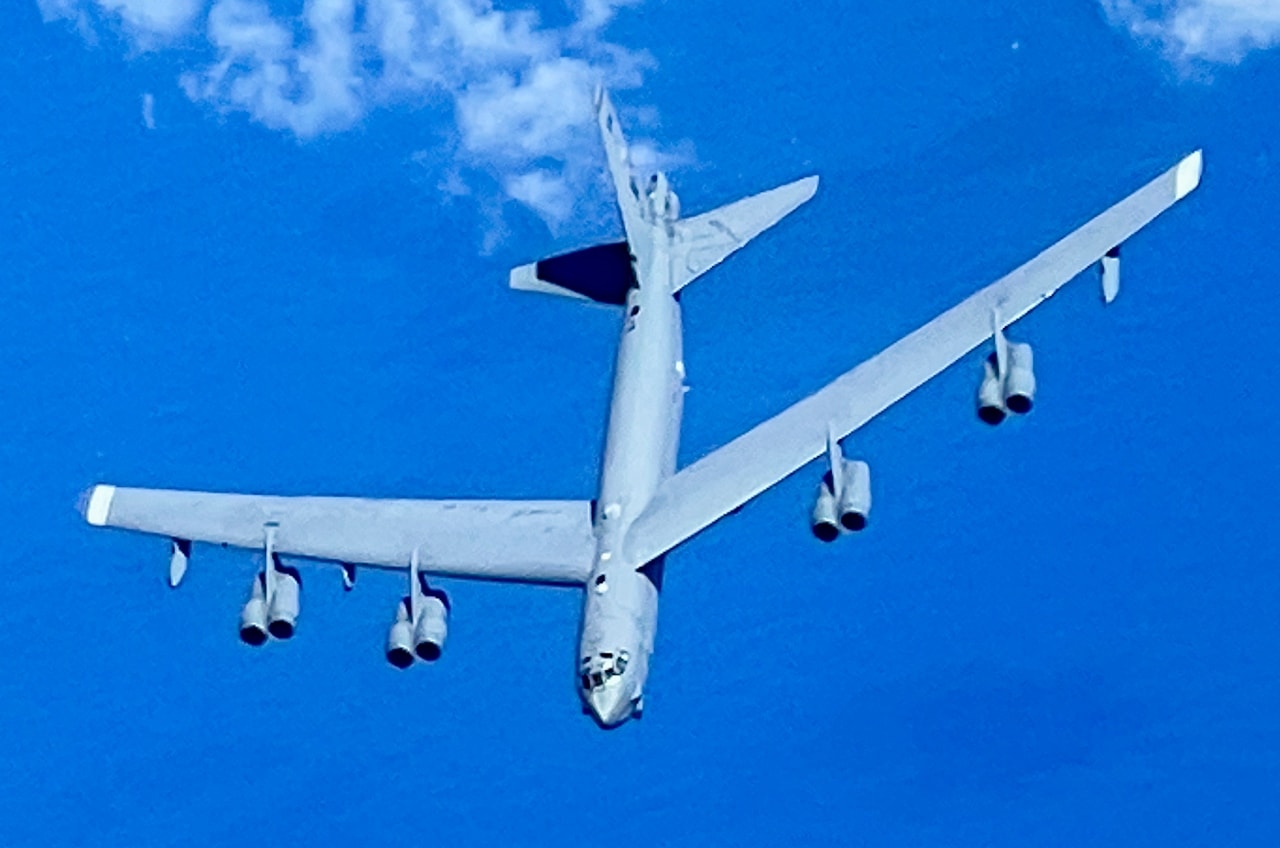The most recent development in the continued improvement of the B-52 pertains to the well-known re-engining effort of the aircraft. The United States Air Force has been working with Boeing and Rolls-Royce for many years to integrate a more powerful and efficient F130 engine for the B-52.
Rolls-Royce, Boeing, and the Air Force achieved a significant milestone and completed a critical design review of the engine in early 2025. This development enabled ongoing testing to remain on track. Rolls-Royce data explains that altitude testing of the new engine took place in February 2025 at the US Air Force Arnold Engineering Development Complex in Tullahoma, Tennessee.
Rolls-Royce further explained that the first phases of sea-level tests had also been completed, which helped solidify data analysis for the new engine. According to Rolls-Royce, the success of the recent testing also helped validate the F130 engine’s dual pod configuration.
The new F130 engine is a critical element of the emerging US Air Force B-52J variant, expected to continue flying into the coming decades. While the airframe underwent structural reinforcements, the aircraft received an entirely new suite of avionics, computing command and control technology, and weapons configuration updates.
These B-52 upgrades have been underway for many years, improvements that will significantly fortify the most recent and cutting-edge B-52J.
F130 Advantages
The new engines will be at least 30 percent more fuel efficient than the existing TF33s, which will lower operational and maintenance costs and enable more dwell time or time over mission targets.
This fuel efficiency enables a B-52 crew to reevaluate and change targets or mission objectives as needed for longer periods of dwell time. The F130s are built such that they will not need an engine overhaul during their lifespan, a fact that also increases operational efficiency and reduces long-term costs for the aircraft.
F130 Technologies
Maintaining the F130 engines will not require the Air Force to rely upon antiquated supply chains because they are based on commercial jet engine technology. Acquiring spare parts and streamlining operations becomes much more possible.
Referred to as the Commercial Engine Replacement Program, the F130 is a variant of Rolls Royce’s BR725 commercial engine. The new engine generates as much as 17,000 pounds of thrust, much greater than the existing TF33 engines.
The engine is also built with a wide range of composite materials intended to increase reliability, improve weight distribution, and improve thermal management or the regulation of heat from the engine.
B-52 lifespan
The most critical element of the new F130 engine is that it is expected to add 30 years of life to the B-52, which could enable the famous plane to fly for as long as 100 years overall. Years ago, senior Air Force weapons developers explained that older airframes can remain viable and highly operational for years beyond their anticipated lifespan with some structural reinforcement and maintenance.
These updates appear to be the case with the B-52 because, although the aircraft is a Vietnam-era plane with a classic history, today’s B-52 is almost an entirely different aircraft due to the nature and extent of the upgrades.
Within the last decade, the B-52 has received a communications technology overhaul, internal weapons bay reconfiguration, new weapons interfaces, and also developed an ability to launch drones.
A B-52 could also easily be configured to launch drone swarms from the air to achieve tactical surprise by blanketing an area with ISR, testing enemy air defenses, or even attacking as mini explosives.
This means the future of the B-52 will continue to be filled with additional innovation; the aircraft is expected to launch and recover drones, fire laser weapons, carry a new generation of air-dropped bombs, and fly with new nuclear weapons such as the Long Range Standoff Weapon cruise missile and air-dropped B-61 Mod 12 upgraded nuclear bomb.
About the Author: Kris Osborn
Kris Osborn is Military Technology Editor of 19FortyFive and the President of Warrior Maven – Center for Military Modernization. Osborn previously served at the Pentagon as a highly qualified expert in the Office of the Assistant Secretary of the Army—Acquisition, Logistics & Technology. Osborn has also worked as an anchor and on-air military specialist at national TV networks. He has appeared as a guest military expert on Fox News, MSNBC, The Military Channel, and The History Channel. He also has a Masters Degree in Comparative Literature from Columbia University.

